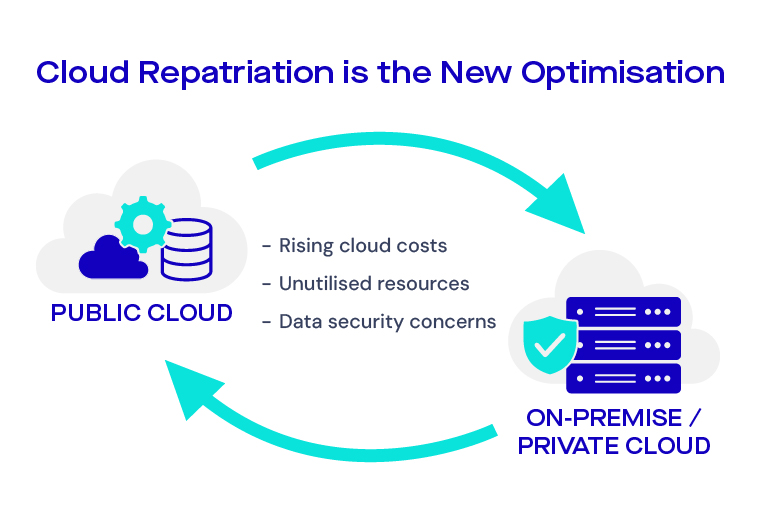Cloud Repatriation is the new optimisation: Why enterprises are coming back home

In the early days of cloud computing, enterprises eagerly embraced the public cloud, lured by promises of scalability, flexibility, and cost savings. However, as the cloud landscape matures, many organisations are re-evaluating their strategies. Enter cloud repatriation—the process of moving workloads from public cloud environments back to on-premises or private cloud infrastructures. This shift isn’t a retreat from the cloud but a strategic move towards cloud cost management and optimisation.

The rising tide of cloud costs
One of the primary drivers behind cloud repatriation is the escalating cost of public cloud services. While introductory pricing and reserved instance discounts were appealing during the first year or three-year commitments, organisations often experience significant cost increases once those periods lapse.
Additionally, many enterprises lack automated processes to manage cloud sprawl. Idle VMs, over-provisioned storage, and forgotten environments are common culprits behind inflated bills. Without strong governance and cloud cost management practices, these inefficiencies lead to unnecessary expenditure.
Gartner predicts 25 per cent of organisations will have experienced significant dissatisfaction with their cloud adoption by 2028, due to unrealistic expectations, suboptimal implementation and uncontrolled costs.
Strategic reassessment: Enterprise cloud strategy
Enterprises are shifting from “cloud-first” to “cloud-fit.” A modern enterprise cloud strategy evaluates each workload on factors such as performance, latency, regulatory requirements, and cost predictability. Some applications—particularly those that are predictable, stable, or license-bound, are better suited to private cloud or on-premises cloud solutions.
This shift isn’t about abandoning the public cloud; it’s about adopting a hybrid cloud strategy that places the right workloads in the right environment.
The rise of hybrid cloud adoption
Instead of choosing between public or private cloud, organisations are now embracing hybrid cloud solutions. This blended approach brings together the hybrid cloud benefits of both worlds:
- Scalability and elasticity from the public cloud
- Control, compliance, and predictability from the private cloud
This model also supports multi-cloud strategies, helping avoid vendor lock-in and offering more options for optimisation and resilience.
AI advancements and data privacy: A push towards Private Cloud
As generative AI and machine learning workloads become central to enterprise innovation, organisations face new challenges in balancing compute performance, data privacy, and model control.
- Training large language models (LLMs) or deploying inference pipelines often requires dedicated compute environments, where resource isolation and cost predictability matter.
- AI applications frequently deal with sensitive customer data or proprietary information, making data sovereignty and security paramount.
Public clouds may offer powerful services, but concerns around where data resides, how it’s handled, and who has access to it have pushed AI-intensive workloads toward private cloud infrastructure. Here, businesses can implement fine-grained access control, encryption standards, and model governance tailored to their risk posture.
Private cloud not only enables secure AI adoption but also supports the co-location of data and compute—critical for real-time applications and regulatory compliance.
Data sovereignty and security considerations
Global data protection regulations—such as GDPR, HIPAA, and Australia’s Privacy Act—have intensified the focus on data sovereignty. Organisations need to know exactly where their data resides and who controls it.
By leveraging on-premises cloud solutions or hosted private cloud platforms, enterprises can:
- Meet jurisdictional data laws
- Reduce risk of data exposure
- Align with internal risk frameworks
In many cases, cloud repatriation is the most straightforward path to restoring that control.
Conclusion: Repatriation as a strategic lever
Cloud repatriation trends show that moving certain workloads back to private or on-premises environments is not about regression—it’s about refinement and efficiency. By realigning cloud investments with actual business needs, organisations can:
- Lower costs
- Strengthen security
- Improve performance
- Ensure compliance
In today’s multi-cloud world, the right cloud for the right workload is not just a motto—it’s the new mandate for digital maturity.



